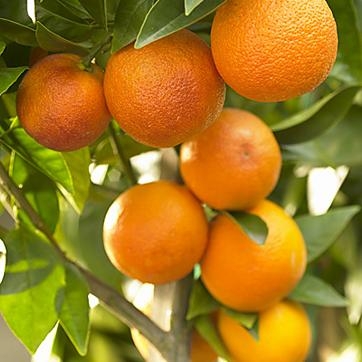
Bringing the plants that are in containers into a covered area is the ideal way to protect them, otherwise covering them with sheets or stringing lit low voltage Christmas lights through them will help fend off the damage for a few nights.
Once the frost has hit though and the leaves have turned black and limp, it is best just to leave them on the plant until all threats of frost are gone - which could be a few months. Otherwise you may encourage new growth by trimming off the dead foliage and that will be damaged even more and deeper into the plant if there is another round of frost in the future.
It is best to sacrifice a few months of unsightly black foliage that will act as a shield than to lose a plant entirely. You can check the almanac for the last frost dates by zip code for your area.

Use a uniform measure like a one-gallon coffee can to make it easy to figure out the amounts. Apply around the drip line (the area defined by the outermost circumference of a tree canopy where water drips from and onto the ground) up to two to three feet beyond and water in deeply.
Do not try to work it into the soil because it will disturb the roots that live in the top two feet of the soil.

Not all stores sell bushes that do well in our area and you must be sure to find ones that are bred to thrive in a mild climate.
‘Southern High Bush' or ‘Rabbiteye' are two that do well here, however they still need specialized care.
There need to be at least two bushes for cross pollination and they need to be planted in an acid soil mix with good drainage, sitting a bit above the soil line in full sun.
Always fertilize with an acid based fertilizer such as one intended for azaleas and camellias, and you should eventually get those baskets of berries you have been dreaming about!

The ideal form of removing weeds is manually, either by hand or using a long handled tool like a hoe, cultivator, weeding fork or oscillating weeding hoe,among the many other tools made for the job. Do it now, while they are still small, before they become large and spread out and control may demand more environmentally unfriendly means such as herbicides.
The UC IPM On-Line Resource Guide has a weed photo gallery to help you determine what kind of weeds you have (important if you need to use an herbicide).
It can also help you tell the difference between your reseeding annuals you have been waiting patiently for from last spring and those annoying sedges that are just starting to pop up! Just remember to put down a two to three inch layer of mulch to keep the weeds from coming back after you have worked so hard to eliminate them!



